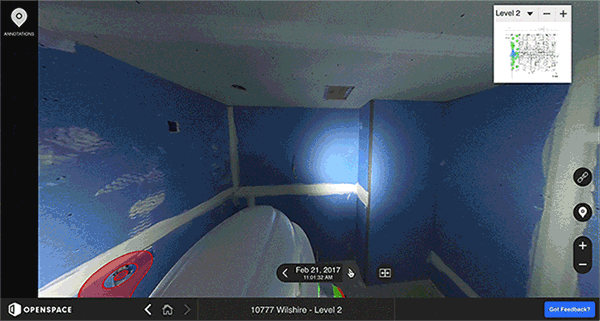Images from 360° cameras attached to construction worker’s hard hats are stitched together by AI
US startup OpenSpace is using patent-pending, artificial intelligence to automatically create navigable, 360° photo representations of a building site.
Construction workers attach a small off-the-shelf 360° camera to their hardhats and walk the site as normal, with OpenSpace passively capturing imagery in the background. Imagery data is then uploaded to the cloud, where OpenSpace’s algorithms map the photos to project plans and stitch them together, creating a visual representation of the site similar in style to Google Street View. This data then accumulates over time, providing builders with a “time machine” that allows them to review site conditions as they were a day ago, a week ago, or years ago.
With OpenSpace, project stakeholders can conduct virtual site tours, communicate easily about change orders, and review the photo record to see changes over time.
“Tishman Speyer has piloted OpenSpace at MIRA in San Francisco and now at our ongoing construction of the Spiral, a three million square foot development in New York City, and we see value in scaling this program more broadly,” said Jenny Wong, Managing Director at Tishman Speyer. “Access to accurate, immediate data is essential in the development and building process, and we are excited to be partnering with OpenSpace.”
“At OpenSpace, we’re using AI to augment workers’ capabilities by making documentation fast, easy and complete,” said Jeevan Kalanithi, co-founder and CEO of OpenSpace. “We started this company by collaborating with builders, on their job sites. We knew that any documentation solution needed to be totally passive in order to fit into the extremely busy day-to-day of a construction site, and this is what inspired us to create OpenSpace’s unique tap-and-go approach.”
The company has just received $14m in Series A funding, which it plans to use to continue to scale up its operations, including sales and marketing expansion, as well as for development of new computer vision powered products.
If you enjoyed this article, subscribe to our email newsletter or print / PDF magazine for FREE






